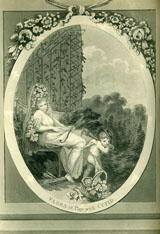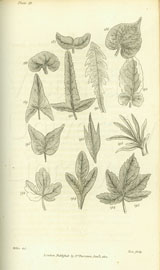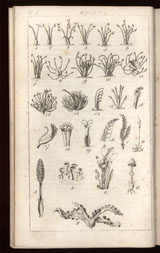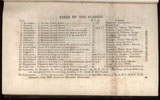The wide popularity of botany at this time is reflected not only in the growing interest in landscape gardening and the picturesque, but also in the books of the landed elite: illustrated floras and abbreviated classification schemes. The demand for exotic specimens was heightened by the government expeditions that introduced a new range of species and established the foundations for national herbaria and museum collections. Behind these cultural projects was theoretical botany, exemplified in the classification scheme of the Swedish naturalist Linnaeus, which was based on the sexual parts of plants; now the flood of new species could be ordered and named. Botanists began to envision plant distribution on a worldwide scale.
“Flora at Play with Cupid” suggests the explicit sexual imagery of Darwin’s “The Loves of the Plants,” influenced by Linnaeus’s system.
Erasmus Darwin. The Botanic Garden; A Poem, in Two Parts.
London: J. Johnson, 1791.
One of the most important botany books of the period, this has an accessible “Table of the Classes” and facing plate.
William Withering. A Systematic Arrangement of British Plants; With an Easy Introduction to the Study of Botany. London: T. Cadell, Jun. and W. Davies, etc., 1801.









